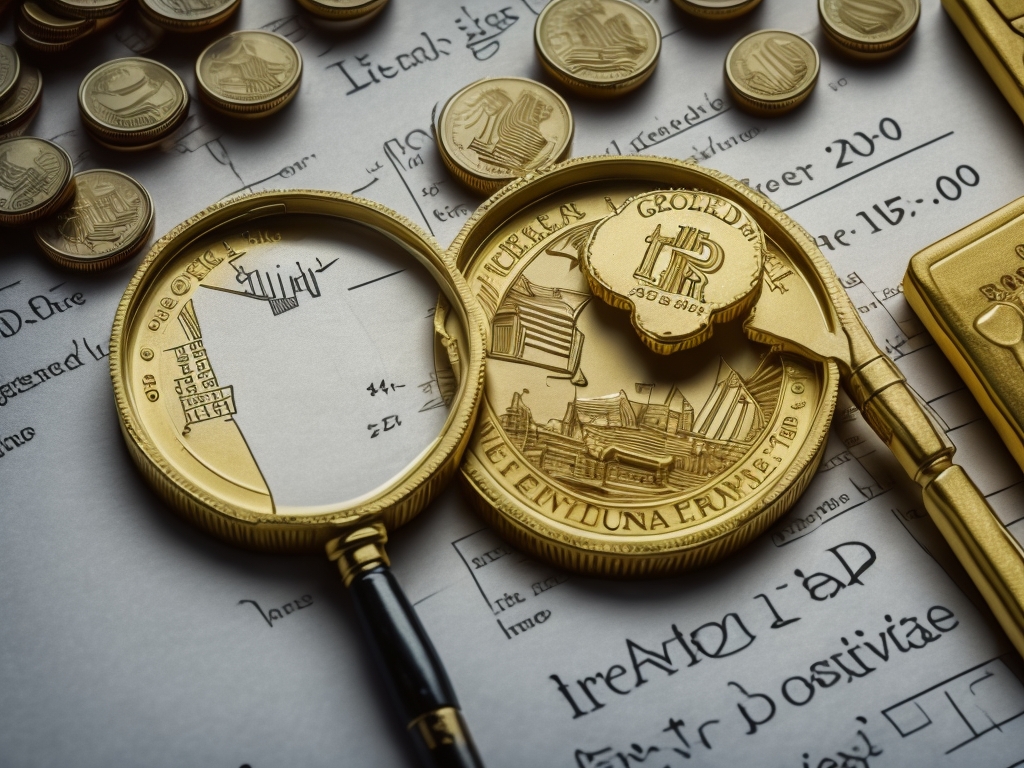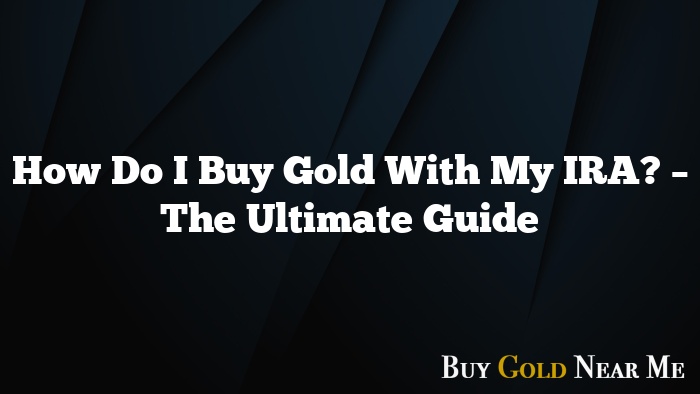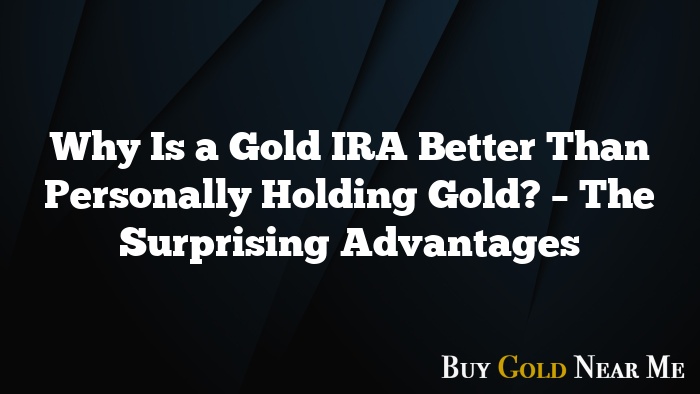Investing in gold through an IRA can be a savvy move to diversify your retirement portfolio and potentially hedge against market volatility. However, the process of setting up a gold IRA can seem daunting at first. In this comprehensive guide, we’ll walk you through the key steps to buying gold with your IRA, from understanding the basics to navigating the account setup and investment options.
| Key Benefits of a Gold-Backed IRA |
Potential Drawbacks to Consider |
- Inflation Hedge
- Potential for Long-Term Growth
- Portfolio Diversification
|
- Storage and Security Costs
- Stricter IRS Rules
- Potentially Higher Fees
|
First, let’s address the fundamentals. An IRA, or Individual Retirement Account, is a tax-advantaged investment account designed to help individuals save and invest for their golden years. While traditional IRAs often focus on stocks, bonds, and mutual funds, the IRS also allows investors to hold physical precious metals, including gold, within a self-directed IRA.
The Benefits of Investing in Gold with Your IRA
One of the primary advantages of holding
gold in an IRA is its potential to serve as an
inflation hedge. Over the long term, gold has demonstrated the ability to maintain its purchasing power, even during periods of economic uncertainty or market volatility. By allocating a portion of your retirement savings to
gold IRA investments, you can potentially protect your nest egg from the eroding effects of inflation.
In addition to
inflation protection, a
gold-backed IRA can also offer
portfolio diversification. By including physical gold alongside traditional financial assets, you can help reduce the overall risk in your retirement portfolio. This diversification can be particularly beneficial during times when stocks or other investments may be underperforming.
Understanding the Different Types of Gold for IRA Investments
When it comes to
gold IRA investments, there are several options to consider. The most common forms of gold accepted by IRA custodians include:
–
Gold Coins: Certain
gold coins, such as American Eagle or Canadian Maple Leaf, are eligible for inclusion in a gold IRA.
–
Gold Bars:
Gold bars of varying sizes, typically ranging from 1 gram to 1 kilogram, can also be held within a gold IRA.
–
Gold Bullion:
Gold bullion, which refers to pure, high-quality gold in the form of coins or bars, is another popular choice for gold IRA investments.
It’s important to note that not all
gold products are deemed acceptable by the IRS for inclusion in a self-directed IRA. Investors should carefully research the specific
gold IRA rules and work with a reputable
gold IRA custodian to ensure they are purchasing eligible
gold IRA investments.
Researching Reputable Gold Dealers and Brokers
When it comes to
buying gold for your IRA, the quality and reputation of the
gold dealer or
broker you work with can make a significant difference. It’s crucial to conduct thorough research and due diligence to identify
reputable gold IRA companies that have a proven track record of providing high-quality
gold products and excellent customer service.
Look for
gold dealers and
brokers that are
licensed, insured, and accredited by industry organizations such as the
Better Business Bureau or the
American Numismatic Association. Additionally, consider reading online reviews, checking for any
complaints or legal issues, and verifying that the company has experience in
gold IRA transactions.
Navigating the Account Setup Process
Setting up a
gold IRA account may seem daunting, but with the right guidance, it can be a straightforward process. The first step is to choose a
self-directed IRA custodian that specializes in
gold IRA investments. These custodians are responsible for holding and safeguarding your
gold assets, as well as ensuring compliance with
IRS regulations.
Once you’ve selected a
gold IRA custodian, you’ll need to complete the account opening paperwork and provide the necessary documentation, such as a copy of your driver’s license and a recent bank statement. The custodian will then guide you through the process of transferring or rolling over funds from your existing
IRA or 401(k) into your new
gold-backed IRA.
Funding Your Gold IRA: Rollover vs. Transfer
When it comes to funding your
gold IRA, you have two main options: a
rollover or a
transfer.
A
rollover involves moving funds from an existing
IRA or 401(k) into your new
gold IRA account. This process allows you to maintain the tax-deferred status of your retirement savings while diversifying into
physical gold.
Alternatively, a
transfer involves moving funds directly from one
IRA custodian to another, specifically to your new
gold IRA. This option can be beneficial if you want to consolidate your retirement assets into a single
gold-backed IRA.
It’s important to work closely with your
gold IRA custodian to ensure that the funding process is handled correctly and in compliance with
IRS regulations.
Choosing the Right Gold Products for Your Portfolio
Once your
gold IRA is funded, you’ll need to decide which
gold products to invest in. As mentioned earlier, the most common options are
gold coins,
gold bars, and
gold bullion. Each type of
gold investment has its own unique characteristics, such as
purity, weight, and premium, that can impact the overall value and performance within your
gold IRA.
It’s crucial to carefully research and understand the
differences between gold products to make an informed decision that aligns with your investment goals and risk tolerance. Your
gold IRA custodian can provide valuable guidance and recommendations to help you select the
gold investments that are the best fit for your retirement portfolio.
Storage and Security Considerations for Your Gold IRA
One of the key considerations when investing in
gold through an IRA is the
storage and security of your
precious metal assets. The IRS requires that all
gold IRA investments be stored in an
approved depository or
vault, which is typically operated by your
gold IRA custodian.
These
storage facilities are designed to provide
high levels of security, including
physical protection, insurance coverage, and strict inventory controls. It’s important to understand the
storage fees associated with your
gold IRA, as well as the
insurance coverage provided to protect your
gold assets in the event of theft or natural disaster.
By working with a reputable
gold IRA custodian and utilizing an
approved depository, you can have peace of mind knowing that your
gold investments are being safely and securely stored on your behalf.
Maximizing Tax Advantages with a Gold-Backed IRA
One of the primary benefits of investing in
gold through an IRA is the potential for
tax advantages. When you hold
physical gold within a
self-directed IRA, the
growth and appreciation of your
gold assets can occur on a
tax-deferred or tax-free basis, depending on the type of IRA you choose.
For example, with a
traditional IRA, the
contributions you make can be tax-deductible, and the
earnings on your
gold investments will grow on a tax-deferred basis until withdrawal. Conversely, a
Roth IRA allows for
tax-free withdrawals in retirement, provided you meet the
eligibility requirements.
By carefully navigating the
tax implications and working with a qualified
gold IRA custodian, you can maximize the
tax benefits associated with your
gold-backed IRA and potentially enhance the long-term growth of your retirement savings.
Diversifying Your Retirement Savings with Physical Gold
Investing in
physical gold through an IRA can be a valuable way to
diversify your retirement portfolio and potentially hedge against market volatility. By allocating a portion of your savings to
gold investments, you can help
reduce the overall risk in your portfolio and provide a
potential safeguard against economic uncertainty.
Gold has historically demonstrated the ability to maintain its value during periods of market turmoil, making it a
compelling asset for those seeking to
protect their retirement savings. Additionally, the
long-term growth potential of
gold investments can complement your other retirement assets, such as
stocks, bonds, and real estate.
When considering
gold IRA investments, it’s important to work with a
knowledgeable financial advisor or
gold IRA custodian to develop a
diversified investment strategy that aligns with your
risk tolerance and
retirement goals.
Monitoring and Managing Your Gold IRA Investments
Investing in
gold through an IRA requires ongoing
monitoring and management to ensure your
retirement savings are being properly protected and positioned for growth. This includes regularly reviewing the
performance and value of your
gold investments, as well as staying up-to-date on any
changes to IRS regulations or
market conditions that may impact your
gold IRA.
Your
gold IRA custodian can play a vital role in this process, providing regular
account statements, performance reports, and
market insights to help you make informed decisions about your
gold investments. Additionally, it’s essential to work closely with a qualified
financial advisor who can help you
monitor and adjust your portfolio as needed to
maintain the appropriate balance between your
gold holdings and other retirement assets.
By actively managing your
gold IRA investments, you can help ensure that your
retirement savings continue to grow and provide the
financial security you need in your golden years.
Common Mistakes to Avoid When Buying Gold for Your IRA
As with any investment, there are several
common pitfalls to be aware of when purchasing
gold for your IRA. One of the most significant mistakes is
failing to work with a reputable and experienced gold IRA custodian. Choosing a custodian with a proven track record of
compliance, security, and customer service is crucial to the success of your
gold IRA investment.
Another common error is
not understanding the IRS rules and regulations surrounding gold IRA investments. Investing in the wrong types of
gold products or failing to properly
store and secure your gold assets can result in
tax penalties and other
compliance issues.
Additionally,
overlooking the fees and expenses associated with a gold IRA can significantly impact the long-term performance of your
retirement savings. It’s important to carefully review and understand all
costs, including
storage fees, custodian fees, and transaction fees, to ensure that your
gold IRA investments align with your financial goals.
By
avoiding these common mistakes and working closely with a
reputable gold IRA provider, you can help
maximize the benefits of including
physical gold in your
retirement portfolio.
Conclusion
Investing in
gold through an IRA can be a strategic way to
diversify your retirement savings and potentially
hedge against market volatility. By understanding the
benefits and considerations of a
gold-backed IRA, as well as the
specific steps involved in the setup and investment process, you can make an informed decision about whether this type of
precious metal investment is the right choice for your financial future.
Remember, the key to successful
gold IRA investing is to work with a
reputable custodian, stay informed about
IRS regulations, and
actively monitor and manage your portfolio to ensure your
retirement savings are well-protected and positioned for long-term growth.
Frequently Asked Questions
What is the minimum investment required for a gold IRA?
The minimum investment required for a
gold IRA can vary depending on the
custodian and
gold dealer you work with. Typically, the minimum investment ranges from $5,000 to $10,000, though some providers may have higher or lower minimums. It’s essential to discuss the specific requirements with your
gold IRA custodian before opening an account.
Can I hold both physical gold and other assets in my gold IRA?
Yes, a
self-directed gold IRA allows you to hold a combination of
physical gold and other eligible
retirement assets, such as
stocks, bonds, and mutual funds. This flexibility can help you
diversify your portfolio and potentially
optimize your risk-adjusted returns over the long term.
What are the annual fees associated with a gold IRA?
The annual fees for a
gold IRA can vary depending on the
custodian and the specific
services they provide. Typical annual fees may include
account maintenance fees, storage fees, and transaction fees. It’s important to carefully review and understand all
costs associated with your
gold IRA before making an investment decision.








